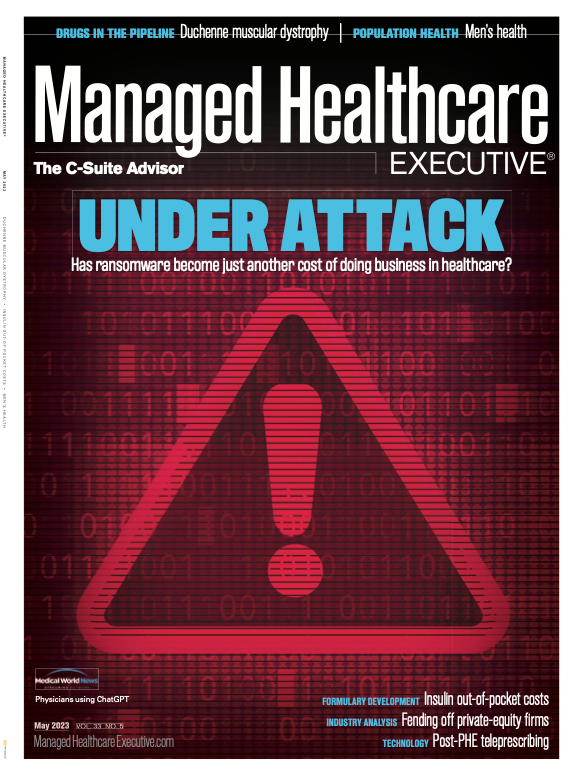Physicians Band Together to Fend Off Private-Equity Firms
Anesthesiologists and emergency department physicians have formed organizations to push back against the firms.
Marco Fernandez, M.D., says he was blindsided in 2021 when his anesthesiology group, Midwest Anesthesia Partners in Arlington Heights, Illinois, lost two hospital contracts in two weeks to private equity-owned anesthesiology groups. What was more surprising to Fernandez, the group’s president, was that the person contracting on behalf of the private-equity group was an executive board member for the American Society of Anesthesiologists. “I was in disbelief,” Fernandez said.
Fernandez and his colleagues at Midwest Anesthesia Partners and three other anesthesiology groupssubsequently started the Association for Independent Medicine (AIM) to push back againstprivate equity-owned takeovers. Take Medicine Back was formed by emergency medicine physicians for similar reasons.
Private-equity firms are investing in or buying healthcare providers across the spectrum —nursing homes, home health agencies, hospitals and physician practices. “It’s in every aspect of health,” Eileen O’Grady, research and campaign director for healthcare at the Private Equity Stakeholder Project, said during a session about private equity at the Association of Health Care Journalists’ annual meeting in March.
Private-equity firms share common characteristics, O’Grady told the journalists. They typically want to double or triple their investment before selling in four to seven years, she said. They often rely on leveraged buyouts and heavy debt to finance their purchase. Another common tactic is to buy small companies and “roll them up” up into larger organizations.
Some private-equity firms use the sale-leaseback model, which involves selling an organization’s real estate and leasing it back to the organization. It may provide an infusion of cash from the sale, but real estate is often a healthcare organization’s biggest asset. O’Grady said she is most troubled by the practice of dividend recapitalizations, which she called “one of the most inexcusable practices of PE (private-equity) firms.” Dividend recapitalizations involve the organization taking on a loan secured by its healthcare business and using some proceeds to pay the private-equity firm a cash dividend, O’Grady explained. This is expensive, as loan funds must be repaid with interest. She shared one example: A hospital system took out a $1.2 billion loan, paying the private equity firm $457 million in dividends. “The hospitals were on the hook to pay that back, while the hospitals were also suffering profound quality issues. There was no value to anyone but the private- equity firm with this transaction.”
Fernandez said that when private equity takes over medical practices, quality suffers. “The cost of care is not going down. The quality is not going up. It’s quite the reverse,” he said. He is hoping AIM can help physicians who want to stay independent. When private- equity firms buy up practices or takes contracts, “there are very few options. You either have to leave the city or just work for them.”
Deborah Abrams Kaplan writes about medical and practice management topics for a number of publications.

Premiums for Employer-based Health Insurance Increased by 7% in 2024, Says KFF Report
Published: October 9th 2024 | Updated: October 9th 2024The 2024 increase is the same as last year's increase for family coverage. The foundation’s annual survey of employer health benefits also found that only 18% of large employers (200 employees are more) are covering the GLP-1 weight loss drugs.
Read More
Doug Chaet of Value Evolutions Discusses Value-based Payment Models, Where They Stand and More
September 29th 2022In this episode of Tuning In to the C-Suite, Managing Editor of Managed Healthcare Executive, Peter Wehrwein, speaks with President of Value Evolutions and MHE Editorial Advisory Board Member, Doug Chaet, FACHE, about value-based care's current standing, the status of select payment models like bundled and episodic, and more.
Listen
Florida Gets the OK. But Will Drug Importation from Canada Actually Happen?
March 5th 2024Canadian health officials warn that maintaining a drug supply for Canadians is their priority. The staunch opposition of the U.S. pharmaceutical industry may also be an obstacle to imports from north of the border.
Read More
We conducted our annual State of the Industry survey in the early part of November 2023. The survey had 432 respondents, of whom 56% self-reported working for a payer organization (pharmacy benefit manager, insurer or self-insured employer), 34% for a provider organization and the remainder for government or an unspecified “other” category.
Read More